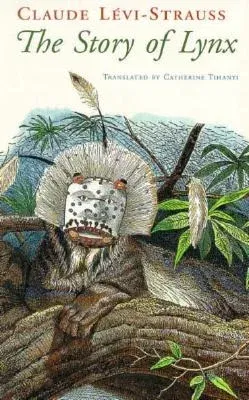"In olden days, in a village peopled by animal creatures, lived Wild Cat
(another name for Lynx). He was old and mangy, and he was constantly
scratching himself with his cane. From time to time, a young girl who
lived in the same cabin would grab the cane, also to scratch herself. In
vain Wild Cat kept trying to talk her out of it. One day the young lady
found herself pregnant; she gave birth to a boy. Coyote, another
inhabitant of the village, became indignant. He talked all of the
population into going to live elsewhere and abandoning the old Wild Cat,
his wife, and their child to their fate . . . "
So begins the Nez Percé myth that lies at the heart of "The Story of
Lynx," Claude Lé vi-Strauss's most accessible examination of the rich
mythology of American Indians. In this wide-ranging work, the master of
structural anthropology considers the many variations in a story that
occurs in both North and South America, but especially among the
Salish-speaking peoples of the Northwest Coast. He also shows how
centuries of contact with Europeans have altered the tales.
Lé vi-Strauss focuses on the opposition between Wild Cat and Coyote to
explore the meaning and uses of "gemellarity," or twinness, in Native
American culture. The concept of dual organization that these tales
exemplify is one of non-equivalence: everything has an opposite or
other, with which it coexists in unstable tension. In contrast, Lé
vi-Strauss argues, European notions of twinness--as in the myth of
Castor and Pollux--stress the essential sameness of the twins. This
fundamental cultural difference lay behind the fatal clash of European
and Native American peoples.
"The Story of Lynx"addresses and clarifies all the major issues that
have occupied Lé vi-Strauss for decades, and is the only one of his
books in which he explicitly connects history and structuralism. The
result is a work that will appeal to those interested in American Indian
mythology.

